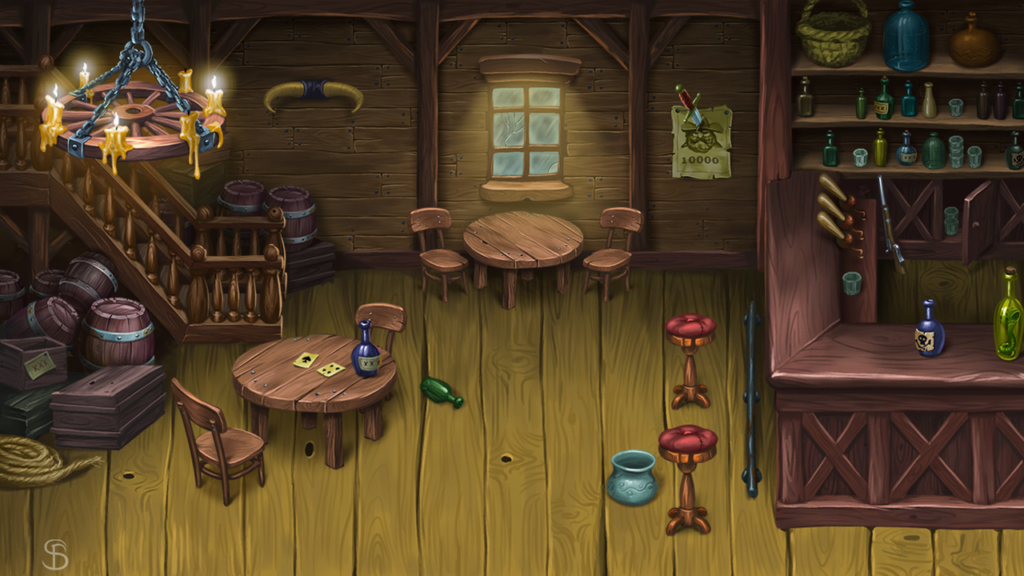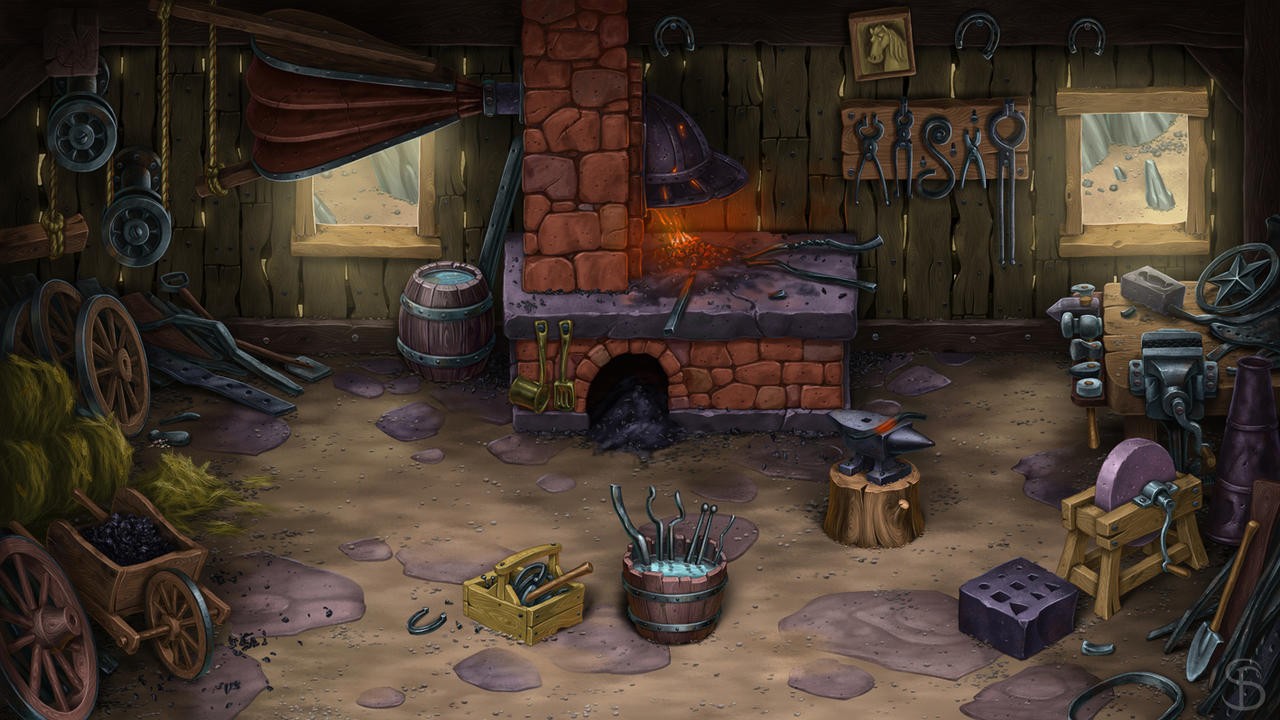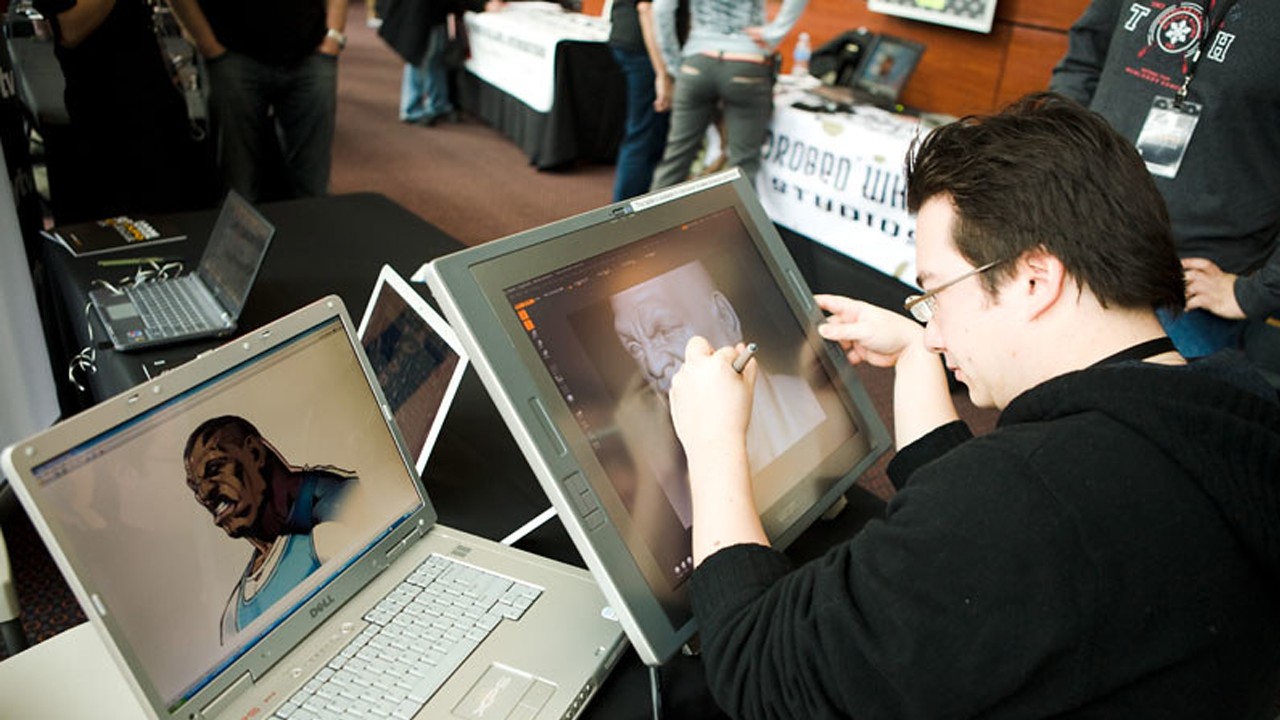Game art and design stands at the crossroads of creativity and technology, breathing life into the heart of every video game. This field merges artistic vision with digital craftsmanship, shaping the immersive worlds that captivate players worldwide. But what exactly encompasses game art and design? How do artists and designers conjure up vivid environments, compelling characters, and dynamic gameplay? Step into the realm of game creation, and uncover the magic behind the pixels and polygons that define our favorite digital adventures.
Exploring the Fundamentals of Game Art
Game art is a pivotal aspect of video game development, encompassing the visual elements that define the game’s aesthetics and atmosphere. At its core, game art is about creating immersive worlds, compelling characters, and dynamic elements that engage players on a visual and emotional level. It requires a blend of creativity, technical skill, and a deep understanding of visual storytelling to bring a game’s vision to life. The process involves a wide range of disciplines including concept art, character design, environmental design, animation, and UI/UX design, each contributing to the overall visual experience of the game.
The evolution of game art has been significantly influenced by advancements in technology, allowing artists to push the boundaries of what can be achieved. From the pixelated sprites of the 8-bit era to the hyper-realistic 3D models of today, the field has seen tremendous growth and diversification. This evolution has not only expanded the toolkit available to game artists but also the scope of what games can represent. Today’s games offer a rich tapestry of visual styles, from the cartoonishly stylized to the meticulously detailed, each serving the narrative and gameplay in unique ways. Understanding the fundamentals of game art is essential for anyone looking to contribute to this vibrant field, as it lays the foundation upon which all creative decisions are made.
Moreover, the collaborative nature of game development means that game artists often work closely with game designers, programmers, and audio engineers to ensure that the visual elements seamlessly integrate with the gameplay mechanics and narrative elements. This interdisciplinary approach is what makes game art such a challenging and rewarding field, as it requires not just artistic talent, but the ability to think critically about how art serves the game as a whole.
- Concept Art
- Character Design
- Environmental Design
- Animation
- UI/UX Design
The Creative Process in Game Design
The creative process in game design is a complex and multifaceted journey that transforms initial concepts into interactive experiences that engage and entertain players. At its core, this process involves a synthesis of art, technology, and narrative, requiring a collaborative effort from a diverse team of professionals. The initial stage often starts with conceptualization, where ideas are freely generated, explored, and then distilled into a coherent game concept. This concept serves as a blueprint for the development process, guiding the team as they navigate through the subsequent stages of design and development.
As the game begins to take shape, designers and artists work in tandem to create the game’s visual identity. This involves crafting characters, environments, and assets that are not only visually appealing but also align with the game’s underlying theme and mechanics. Attention to detail is paramount, as the visual elements must seamlessly integrate with gameplay to create a cohesive and immersive experience. Meanwhile, narrative designers weave together compelling storylines that resonate with players, adding depth and richness to the game world. This collaborative effort is iterative, with constant feedback loops and adjustments ensuring that the game evolves in line with the original vision while also adapting to practical considerations and player feedback.
Throughout the development process, the team must also navigate technical challenges, optimizing performance and ensuring that the game is accessible to its intended audience. This often requires innovative solutions, pushing the boundaries of what is currently possible to enhance the player’s experience. The culmination of this journey is a game that not only entertains but also inspires, reflecting the passion and creativity of its creators.
- Conceptualization and Ideation
- Visual and Narrative Development
- Prototyping and Gameplay Mechanics
- Feedback Loops and Iterative Design
- Technical Optimization and Launch
Tools and Technologies in Game Art

The realm of game art and design is a constantly evolving landscape, where creativity meets technology. At its core, game art is the process of creating the visual elements of a video game, including characters, environments, and UI elements. To bring these creative visions to life, artists and designers rely on a suite of sophisticated tools and technologies. Understanding these tools is not just about knowing how to use them but also about grasping how they can push the boundaries of what’s possible in game development.
One of the cornerstones of game art creation is 3D modeling software. Programs like Autodesk Maya and Blender are indispensable for creating complex characters and immersive worlds. These tools offer powerful features for modeling, texturing, and animation, which are crucial for giving life to static models. Another essential technology is game engines, such as Unity and Unreal Engine. These platforms provide the environment where all elements of game art come together, allowing for the integration of models, animations, and interactions. They are the canvas on which the game’s visual and interactive masterpiece is painted.
Additionally, digital painting and texturing software such as Adobe Photoshop and Substance Painter are key for adding details and textures to game assets. These tools allow artists to create high-resolution textures and intricate details that enhance the visual fidelity of game environments and characters. The advent of virtual reality (VR) and augmented reality (AR) technologies has also opened new frontiers for game art, offering immersive ways to experience games and expanding the toolbox for game designers with software like VR Sketch and Tilt Brush.
To further illuminate the impact of these tools and technologies on the game art landscape, consider the following insights:
- 3D modeling software not only enables the creation of detailed game assets but also allows for the simulation of physics and animations, making game worlds more realistic.
- Game engines are pivotal in the democratization of game development, offering powerful capabilities to indie developers and large studios alike.
- Digital painting and texturing software bridge the gap between traditional art techniques and digital execution, enabling artists to bring their unique styles into the game world.
- VR and AR technologies are not just new platforms for game development but also tools that offer unique ways of creating and interacting with game art.
- The integration of AI with these tools is beginning to automate certain tasks, such as texture generation and environmental design, streamlining the creation process and allowing artists to focus on more creative aspects.
The intersection of art and technology in game development is a dynamic field that continually challenges and inspires creatives. The tools and technologies available today empower artists and designers to create detailed, immersive, and engaging game worlds like never before. As these technologies advance, so too will the possibilities for innovation in game art and design. The future of game art is not just about the tools we use but how we use them to tell stories, evoke emotions, and create experiences that captivate players around the world.
The Role of Narrative in Game Design
In the realm of game art and design, the narrative serves as the backbone, guiding players through a carefully crafted world and story. A compelling narrative can transform a simple game into an immersive experience, engaging players emotionally and mentally. The importance of narrative in game design cannot be overstated, as it provides context to the gameplay, enriching the overall experience. By integrating storytelling elements, developers can create a more cohesive and compelling game world.
Narratives in games are not just about telling a story; they are about creating an environment where players can experience the story through the choices they make. This interactive storytelling is what sets games apart from other media. Through the narrative, games can invoke a wide range of emotions, from joy to sadness, and fear to excitement. Moreover, a well-crafted narrative can significantly enhance the replay value of a game, as players may want to explore different choices and outcomes.
Furthermore, the narrative complements the game’s mechanics, seamlessly blending story and gameplay. It’s not merely about advancing the plot but about making the gameplay meaningful. When players understand the stakes and their role within the story, their actions take on new weight, leading to a more engaging and satisfying gaming experience.
Expanding the Narrative: Beyond the Main Storyline
While the main storyline is crucial, side quests and background lore play a significant role in deepening the narrative landscape of a game. These elements provide additional layers of detail, allowing players to immerse themselves fully in the game world. By exploring these narrative branches, players can uncover hidden stories and motivations, enriching their understanding of the game’s universe.
| Aspect | Importance | Examples |
|---|---|---|
| Main Storyline | Central to player engagement | Hero’s journey, revenge quests |
| Side Quests | Depth and replayability | Character backstories, hidden treasures |
| Background Lore | World-building | Historical events, cultural practices |
| Character Development | Emotional engagement | Transformations, moral dilemmas |
| Player Choices | Interactivity and consequence | Moral choices, branching paths |
Exploring the role of narrative in game design reveals its multifaceted impact on the gaming experience. It’s not merely about the story being told but about how the story is woven into the gameplay, offering a blend of narrative and interactive elements. This integration ensures that players are not passive consumers but active participants in the storytelling process. By understanding and leveraging this, game designers can craft experiences that resonate deeply with their audience, leaving a lasting impact.
Career Paths in Game Art and Design

The realm of game art and design is as expansive as it is lucrative, offering a plethora of career paths for those with a passion for merging creativity with technology. At the core, professionals in this field are responsible for the visual and interactive elements of video games, which range from character design and environment creation to the user interface and experience. The industry seeks individuals who are not only proficient in the latest digital tools but are also storytellers, capable of bringing immersive worlds to life.
A career in game art and design might lead you down several exciting paths. For instance, game artists focus on the visual aspects, creating everything from characters to backgrounds, using software like Adobe Photoshop or Autodesk Maya. On the other hand, game designers are more involved in crafting the gameplay experience, developing the rules, storylines, and the overall flow of the game. Technical artists stand at the crossroads of art and programming, optimizing art for performance and integrating it with game engines. Each role plays a pivotal part in the game development process, ensuring that the final product is both visually stunning and engaging.
Digital sculptors and texture artists are also in high demand, tasked with giving life to the characters and environments through 3D modeling and texturing. These professionals must possess a keen eye for detail and a deep understanding of form, color, and light to create assets that are both realistic and aligned with the game’s aesthetic.
Expanding Opportunities in Game Art and Design
As the gaming industry continues to evolve, the demand for innovative and skilled game artists and designers grows. With advancements in technology and the increasing popularity of virtual and augmented reality, new avenues are constantly emerging. Professionals willing to continuously learn and adapt can find opportunities in areas previously unimagined, pushing the boundaries of interactive entertainment and art.
| Position | Skills Required | Potential Employers |
|---|---|---|
| Game Artist | Proficiency in 2D/3D software, creativity, art fundamentals | Game studios, Freelance, Educational software companies |
| Game Designer | Storytelling, user experience design, coding basics | Game development companies, Indie game teams |
| Technical Artist | Coding, art optimization, engine integration | Large game publishers, AR/VR companies |
| Digital Sculptor | 3D modeling, texturing, anatomical knowledge | Film studios, Game development studios |
| Texture Artist | Detail orientation, Photoshop, 3D painting tools | Animation studios, Video game companies |
In conclusion, the field of game art and design is dynamic and diverse, offering an array of career opportunities for those passionate about games and storytelling. Whether you’re drawn to the artistic side, the technical aspects, or game storytelling, there’s a place for you in this exciting industry. Embracing continuous learning and staying abreast of industry trends will be key to thriving in these roles. The future of game art and design is bright, full of potential for creative minds ready to explore the limits of their imagination.

Is a game developer and writer with over seven years of experience in the gaming industry. Specializing in game design, development trends, and emerging technologies. He has worked on indie game projects and larger development teams, sharing his insights to help aspiring developers navigate the evolving world of game creation. Ethan’s articles focus on practical tips, game mechanics, and tools to inspire creativity in the gaming community.






